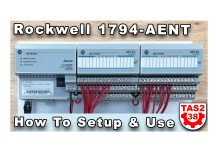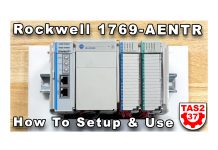
One limitation of legacy programmable controllers like the PLC-5, SLC-500, and MicroLogix, was the inability to save “address names,” known as “symbols” in the aforementioned products, directly to the controller.
And since these “symbols” could only be saved with the offline project, in order to display them while online required that you match-up the correct offline file with the one already in the controller.
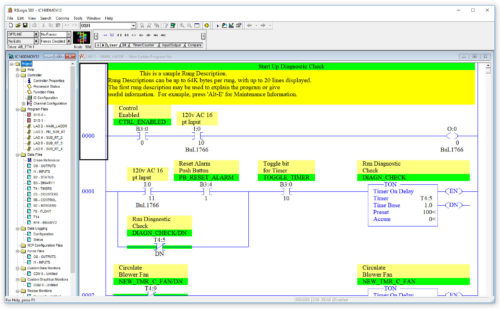
But thankfully for Allen-Bradley users, with the release of the ControlLogix in 1999 Rockwell switched from using “Data Tables” to a user created Tag Database that was also downloaded to the controller along with the user’s program.
This change enabled programmers to create their own custom named Tags for any supported data type, which resulted in what Rockwell called “self documenting” code.
That said, Logix controllers still automatically assigned Tag names to Physical I/O based on the module type and slot.
With this in mind, Rockwell included a feature known as Tag Aliasing which allows users to assign their own Tags as “aliases” to the Physical I/O Tags (or to any other Tag for that matter.)
And while many find using Alias Tags to be quite useful, they do have one fairly big limitation, which is that a Tag’s alias definition can’t be edited online.
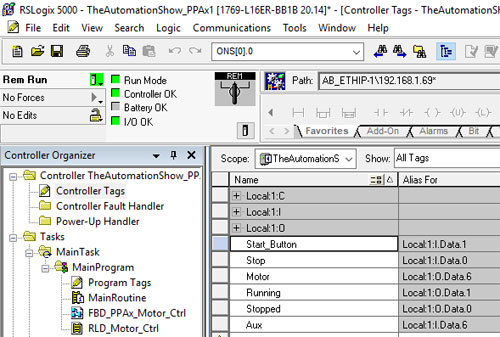
That’s not to say you can’t create new Tags online, or rename Tags online, or even alias new Tags to I/O online. You can do all three, even in older versions of RSLogix 5000.
But what you can’t do is change or edit a Tag’s Alias online.
For most this isn’t an issue because you typically don’t change which I/O terminals your I/O devices are wired to while your system is running.
And even if you did, you can still rename old Alias Tags and replace them with new Alias Tags while your online and in run mode.
But that said, I recently found out that quite a few of my connections don’t use Tag Aliases at all.
Actively Avoiding Aliases
I received this feedback when I asked my connections how they were handling migrating programs from the 5370 to 5380, which I discuss in a previous article here.
The response wasn’t at all what I was expecting, as nearly all of the respondents said they’ve been avoiding Alias Tags completely.
Many shared that instead of using Alias Tags, they used a dedicated Routine to “map” Physical I/O Tags to user created Tags.
The thought process being that, while Tag Aliases can’t be edited online, Routines can be.
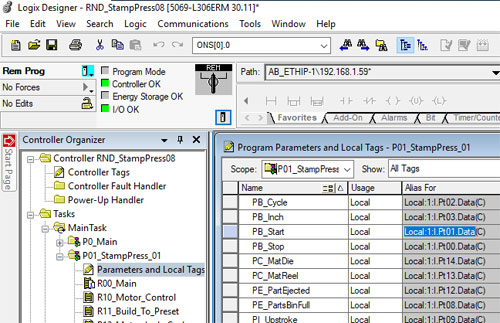
Now as you might imagine, creating a “one to one” relationship in code for hundreds of I/O points can be quite a task.
So I wasn’t surprised to hear that for many Structured Text was the language of choice to accomplish the mapping.
But there is a downside to that approach; many end users don’t have a version of RSLogix/Studio 5000 that can view Structured Text routines.
And if you can’t view the routine that does the I/O to Tag mapping, you’re at a huge disadvantage when it comes time to troubleshoot the system.
In fact, this was one of the major issues using ControlNet and DeviceNet with some legacy PLCs, as you couldn’t tell where each node’s I/O was mapped without first purchasing an expensive copy of RSNetworxs.
It is possible to avoid the Structure Text licensing issue by mapping your I/O to Tags using Ladder Logic.
But in all but the most basic systems you’ll end up with a rung (or branch) for every Discrete I/O Point in your system.
So while I do see the wisdom and flexibility of using a routine to map I/O to Tags, at the same time it seems like there should be a better solution twenty years after the Logix controller came out.
What do you think?
Should features which don’t support online edits, like Alias Tags, Produced and Consumed Tags, and Add-On Instructions, be avoided?
Or do you use these features with the foreknowledge that like rewiring physical I/O you’ll need to take the system offline to make changes to Alias Tags, AOIs, and Produced and Consumed Tags?
I’d love to hear your thoughts on this, and you can share with us by clicking on the “comment” link below.
Until next time, Peace ✌️
If you enjoyed this content, please give it a Like, and consider Sharing a link to it as that is the best way for us to grow our audience, which in turn allows us to produce more content 🙂
Shawn M Tierney
Technology Enthusiast & Content Creator
Support our work and gain access to hundreds members only articles and videos by becoming a member at The Automation Blog or on YouTube. You’ll also find all of my affordable PLC, HMI, and SCADA courses at TheAutomationSchool.com.
- A.I. Tech Talk with Emil Soerensen of Kapa.ai (12/04/25) - December 4, 2025
- Innovation Summit Las Vegas 2025 Recap (P254) - December 3, 2025
- New Features of Ignition 8.3 with Travis Cox (S2E37) - December 2, 2025



